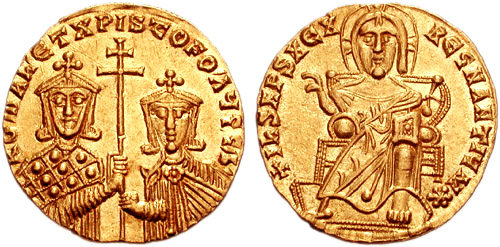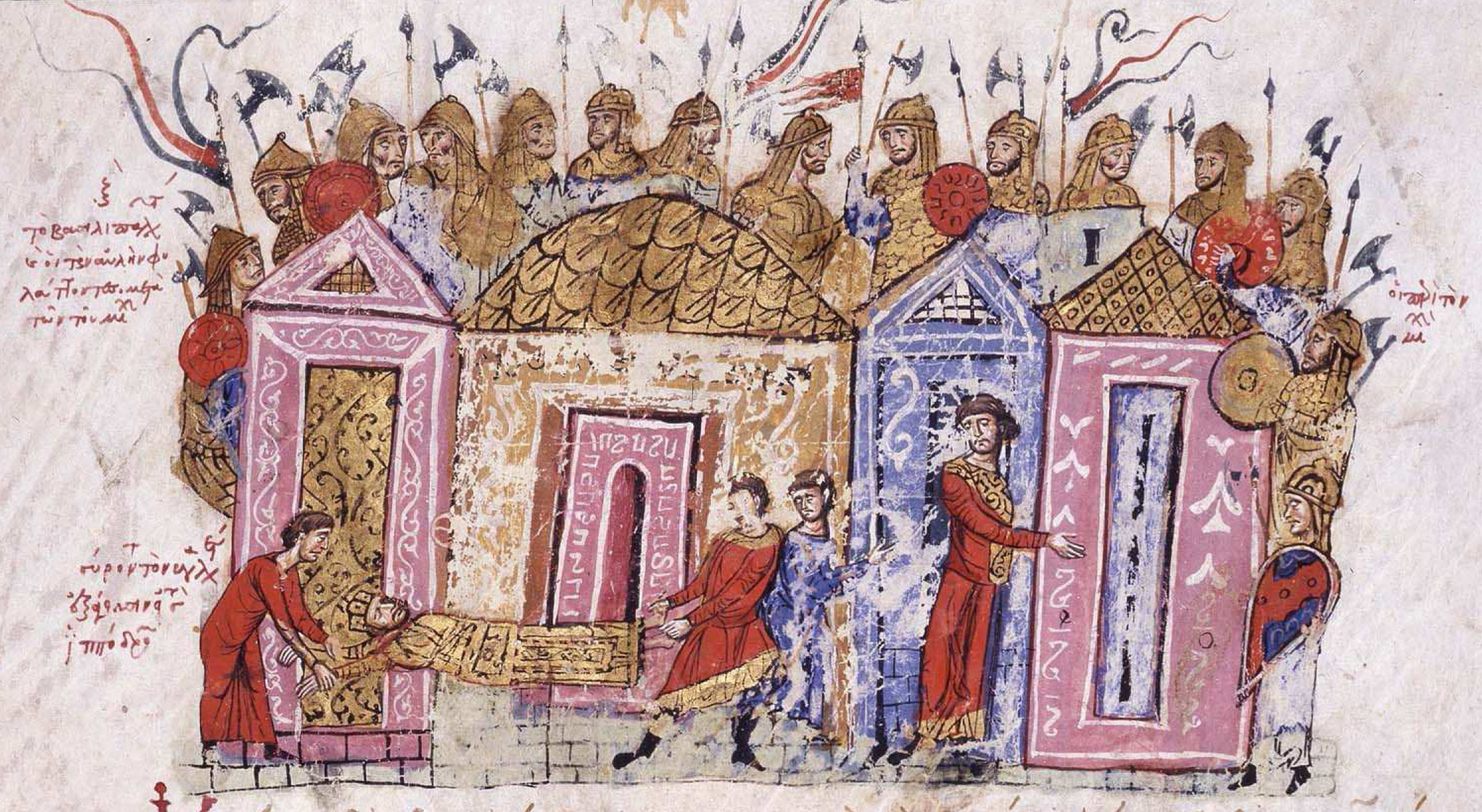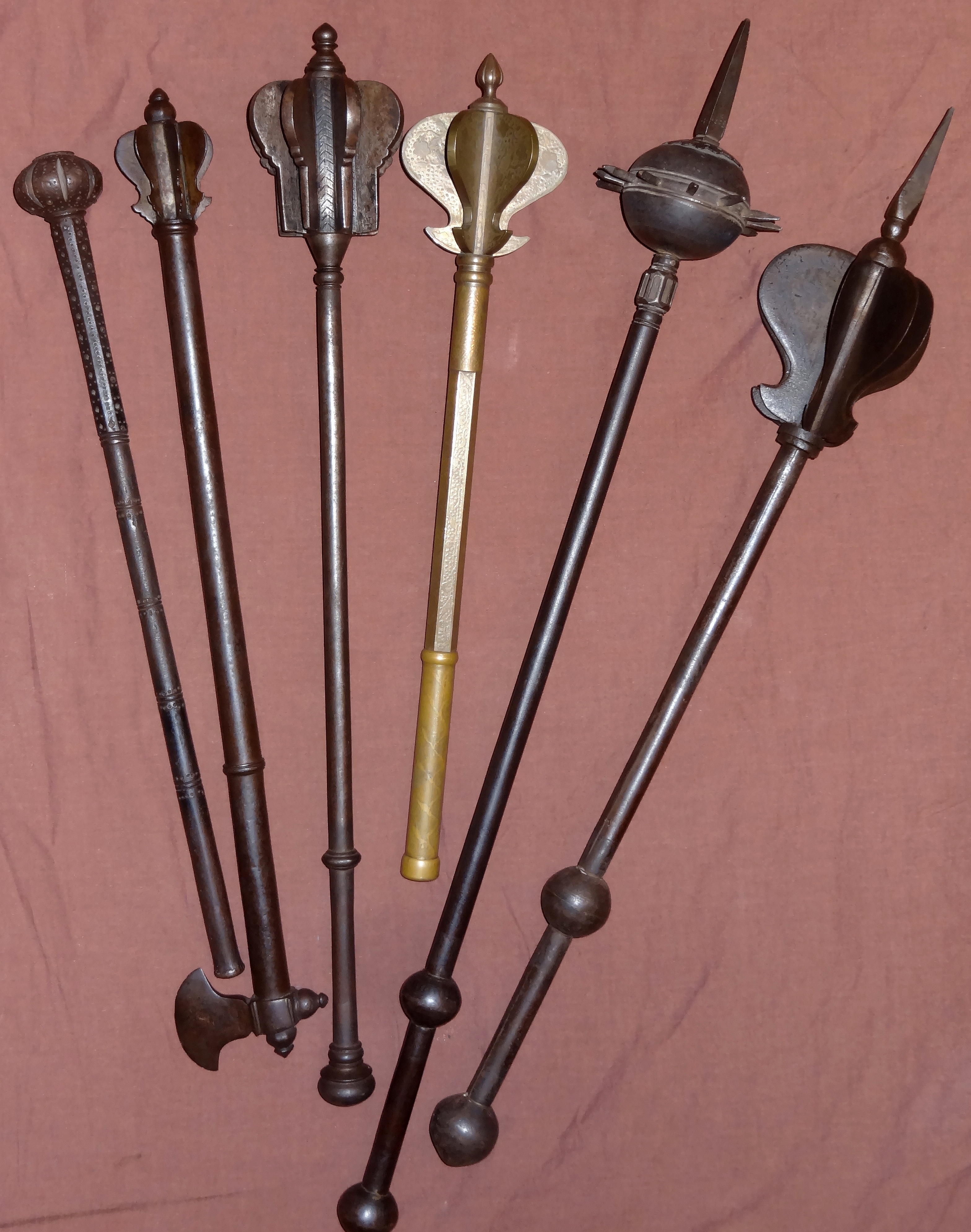|
Megas Droungarios Tes Vigles
The ''Droungarios'' of the Watch ( el, δρουγγάριος τῆς βίγλης/βίγλας, ''droungarios tēs viglēs/viglas''), sometimes anglicized as "Drungary of the Watch", was originally a senior Byzantine military post. Attested since the late 8th century, the ''droungarios'' commanded the '' Vigla'' or "Watch", one of the elite professional cavalry regiments ('' tagmata'') of the middle Byzantine period, and was in charge of the Byzantine emperor's personal security. From , the office was disassociated from its military origin and was transformed into a senior judicial position, thereafter usually referred to as the Grand ''Droungarios'' of the Watch (μέγας δρουγγάριος τῆς βίγλης/βίγλας, ''megas droungarios tēs viglēs/viglas''). The office continued to exist as a mostly honorific court dignity in the Palaiologan era, until the very end of the Byzantine Empire in the mid-15th century. Military office The ''Droungarios'' of the Watch wa ... [...More Info...] [...Related Items...] OR: [Wikipedia] [Google] [Baidu] |
Droungarios
A ''droungarios'', also spelled ''drungarios'' ( el, δρουγγάριος, la, drungarius) and sometimes anglicized as Drungary, was a military rank of the late Roman and Byzantine empires, signifying the commander of a formation known as ''droungos''. Late Roman and Byzantine army Latin-speakers adopted the word ''drungus'' - first attested in the early 4th century - either from Gaulish or from a Germanic language. In the late 6th century, the Emperor Maurice (r. 582–602) in his '' Strategikon'' used ''droungos'' to refer to a specific tactical deployment, usually of cavalry, although still in the general sense of "grouping, division". The term ''droungarios'' (Greek: δρουγγάριος) is not documented before the early 7th century but might have been used as an informal or unofficial designation before that date. The office and the corresponding unit appear to have initially referred to ''ad hoc'' arrangements, but during the early 7th century these were formalized, l ... [...More Info...] [...Related Items...] OR: [Wikipedia] [Google] [Baidu] |
Covered Hippodrome
The Covered Hippodrome ( el, ) was a covered courtyard that served as an antechamber to the Great Palace of Constantinople in Istanbul, Turkey. The French scholar Rodolphe Guilland also equated it with the emperors' private hippodrome. It lay on the southeastern corner of the palace complex, and connected the Palace of Daphne in the north with the later lower palace complex around Bucoleon in the south, through the gate of Skyla. It played a great role in imperial ceremonies, and is not to be confused with the far larger adjacent Hippodrome of Constantinople, which in Byzantine sources was often distinguished as the "uncovered" () Hippodrome. From the 9th to the 11th centuries, it was also the site of one of the Byzantine capital's highest courts, the tribunals of the "judges of the Hippodrome" () and of the "judges of the ''velum Velum may refer to: Human anatomy * Superior medullary velum, anterior medullary velum or valve of Vieussens, white matter, in the brain, which stretc ... [...More Info...] [...Related Items...] OR: [Wikipedia] [Google] [Baidu] |
Protospatharios
''Prōtospatharios'' ( el, πρωτοσπαθάριος) was one of the highest court dignities of the middle Byzantine period (8th to 12th centuries), awarded to senior generals and provincial governors, as well as to foreign princes. History The meaning of the title, "first ''spatharios''", indicates its original role as leader of the order (''taxis'') of the ''spatharioi'', the imperial bodyguards, was already attested in the 6th century. Probably under the Heraclians, the rank became an honorary dignity (Greek: δια βραβείου ἀξία, ''dia brabeiou axia''), and was henceforth bestowed to high-ranking theme commanders, senior court officials, and allied rulers.. The first concrete reference to a ''prōtospatharios'' occurs in the ''Chronicle'' of Theophanes the Confessor, who records "Sergios, ''prōtospatharios'' and '' stratēgos'' of Sicily" in 718. In the late 9th century, the ''prōtospatharios'' is recorded as ranking below the ''patrikios'' and above the ''di ... [...More Info...] [...Related Items...] OR: [Wikipedia] [Google] [Baidu] |
Patrikios
The patricians (from la, patricius, Greek: πατρίκιος) were originally a group of ruling class families in ancient Rome. The distinction was highly significant in the Roman Kingdom, and the early Republic, but its relevance waned after the Conflict of the Orders (494 BC to 287 BC). By the time of the late Republic and Empire, membership in the patriciate was of only nominal significance. The social structure of Ancient Rome revolved around the distinction between the patricians and the plebeians. The status of patricians gave them more political power than the plebeians. The relationship between the patricians and the plebeians eventually caused the Conflict of the Orders. This time period resulted in changing the social structure of Ancient Rome. After the Western Empire fell, the term "patrician" continued as a high honorary title in the Eastern Empire. In the Holy Roman Empire and in many medieval Italian republics, medieval patrician classes were once again formal ... [...More Info...] [...Related Items...] OR: [Wikipedia] [Google] [Baidu] |
Anthypatos
''Anthypatos'' ( gr, ἀνθύπατος) is the translation in Greek of the Latin ''proconsul''. In the Greek-speaking East, it was used to denote this office in Roman and early Byzantine times, surviving as an administrative office until the 9th century. Thereafter, and until the 11th century, it became a senior Byzantine court dignity. History and functions Gubernatorial title The title of ''anthypatos'' was the traditional Greek translation for the Latin title of ''proconsul''. Under the Principate, the title of ''anthypatos''/''proconsul'' had been borne by all governors of a senatorial province, irrespective of whether they had previously been consuls, but after the reforms of Diocletian (), there were only two: the governors of Asia and Africa. The ''Notitia Dignitatum'' of , on the other hand, mentions three, with the proconsuls of Africa (''Pars Occ''. XVIII) and Asia (''Pars Or.'' XX) being joined by the proconsul of Achaea or Hellas (''Pars Or.'' XXI). To them was adde ... [...More Info...] [...Related Items...] OR: [Wikipedia] [Google] [Baidu] |
Manuel Kourtikes
Manuel Kourtikes or Kourtikios () was a Byzantine official and military commander in the 940s. Biography The Kourtikios or Kourtikes family was Armenian in origin and entered Byzantine service under Basil I the Macedonian (r. 867–886), when its eponymous founder, K'urdik, ceded his fortress of Lokana to the Empire. Manuel is mentioned for the first time as one of the officials who conspired with the co-emperor Stephen Lekapenos, when the latter deposed his father, Emperor Romanos I, in December 944. Shortly after, however, Stephen and his brother, Constantine, were in turn deposed by their brother-in-law, the legitimate emperor Constantine VII Porphyrogennetos. Constantine VII raised Manuel to the rank of and given the post of , a critical position as its holder's chief duty was guarding the emperor on campaign and in the palace. This suggests that Manuel either quickly defected to Constantine VII's side, or that he had been a partisan of the latter all along, and co-operated wi ... [...More Info...] [...Related Items...] OR: [Wikipedia] [Google] [Baidu] |
John Kourkouas
John Kourkouas ( gr, Ἰωάννης Κουρκούας, Ioannes Kourkouas, ), also transliterated as Kurkuas or Curcuas, was one of the most important generals of the Byzantine Empire. His success in battles against the Muslim states in the East reversed the course of the centuries-long Arab–Byzantine wars and set the stage for Byzantium's eastern conquests later in the century. Kourkouas belonged to a family of Armenian descent that produced several notable Byzantine generals. As commander of an imperial bodyguard regiment, Kourkouas was among the chief supporters of Emperor Romanos I Lekapenos () and facilitated the latter's rise to the throne. In 923, Kourkouas was appointed commander-in-chief of the Byzantine armies along the eastern frontier, facing the Abbasid Caliphate and the semi-autonomous Muslim border emirates. He kept this post for more than twenty years, overseeing decisive Byzantine military successes that altered the strategic balance in the region. During t ... [...More Info...] [...Related Items...] OR: [Wikipedia] [Google] [Baidu] |
Eustathios Argyros (general Under Leo VI)
Eustathios Argyros ( el, Εὐστάθιος Ἀργυρός; died ca. 910) was a Byzantine aristocrat and one of the most prominent generals under Emperor Leo VI the Wise (r. 886–912). The first member of the Argyros family to rise to high posts, he fought with distinction against the Arabs in the east, before being disgraced ca. 907, possibly in connection with the flight of Andronikos Doukas to the Arabs. Rehabilitated soon after, he was appointed as ''strategos'' of Charsianon, from which post he oversaw the settlement of Armenian lords as march-wardens along the Empire's eastern frontier. Promoted to commander of the imperial bodyguard in late 908, he again fell into disgrace shortly after and died of poison (apparently a suicide) on his way to his estates. Life Eustathios Argyros was the son of the ''tourmarches'' Leo Argyros, the founder of the noble Argyros family. Nothing is known of his life or prior to the turn of the 10th century, although he may have been in i ... [...More Info...] [...Related Items...] OR: [Wikipedia] [Google] [Baidu] |
Varangian Guard
The Varangian Guard ( el, Τάγμα τῶν Βαράγγων, ''Tágma tōn Varángōn'') was an elite unit of the Byzantine Army from the tenth to the fourteenth century who served as personal bodyguards to the Byzantine emperors. The Varangian Guard was known for being primarily composed of recruits from northern Europe, including mainly Norsemen from Scandinavia but also Anglo-Saxons from England. The recruitment of distant foreigners from outside Byzantium to serve as the emperor's personal guard was pursued as a deliberate policy, as they lacked local political loyalties and could be counted upon to suppress revolts by disloyal Byzantine factions. The Rus' provided the earliest members of the Varangian Guard. They were in Byzantine service from as early as 874. The Guard was first formally constituted under Emperor Basil II in 988, following the Christianization of Kievan Rus' by Vladimir I of Kiev. Vladimir, who had recently usurped power in Kiev with an army of Varangi ... [...More Info...] [...Related Items...] OR: [Wikipedia] [Google] [Baidu] |
Rodolphe Guilland
Rodolphe Joseph Guilland (Lons-le-Saunier, 1888 – Saint-Marcellin, Isère, 5 October 1981) was a French Byzantinist. Life Born in 1888, he completed his thesis on Nikephoros Gregoras (a biography in 1926, and his edited correspondence in 1927), and succeeded his teacher Charles Diehl in the seat of Byzantine studies at the Sorbonne in 1934, which he held until his retirement in 1958. His chief interest was in the late Byzantine period (1204–1453), particularly the Palaiologan period, and his main areas of research were the history of the Great Palace of Constantinople The Great Palace of Constantinople ( el, Μέγα Παλάτιον, ''Méga Palátion''; Latin: ''Palatium Magnum''), also known as the Sacred Palace ( el, Ἱερὸν Παλάτιον, ''Hieròn Palátion''; Latin: ''Sacrum Palatium''), was th ..., and of the offices, dignities, and administrative apparatus of the Byzantine state. Works He wrote 192 works on Byzantine subjects, spanning the years from 1921 to ... [...More Info...] [...Related Items...] OR: [Wikipedia] [Google] [Baidu] |
Mace (bludgeon)
A mace is a blunt weapon, a type of club or virge that uses a heavy head on the end of a handle to deliver powerful strikes. A mace typically consists of a strong, heavy, wooden or metal shaft, often reinforced with metal, featuring a head made of stone, bone, copper, bronze, iron, or steel. The head of a military mace can be shaped with flanges or knobs to allow greater penetration of plate armour. The length of maces can vary considerably. The maces of foot soldiers were usually quite short (two or three feet, or sixty to ninety centimetres). The maces of cavalrymen were longer and thus better suited for blows delivered from horseback. Two-handed maces could be even larger. Maces are rarely used today for actual combat, but many government bodies (for instance, the British House of Commons and the U.S. Congress), universities and other institutions have ceremonial maces and continue to display them as symbols of authority. They are often paraded in academic, parliamentary or ... [...More Info...] [...Related Items...] OR: [Wikipedia] [Google] [Baidu] |
Sagion
The sagum was a garment of note generally worn by members of the Roman military during both the Republic and early Empire. Regarded symbolically as one of war by the same tradition which embraced the toga as a garment of peace,{{cite encyclopedia , editor = Henry Nettleship and J. E. Sandys , encyclopedia = Dictionary of Classical Antiquities , title = Sagum , url = http://www.ancientlibrary.com/seyffert/0557.html , accessdate = 2007-02-03 , year = 1894 , url-status = dead , archiveurl = https://web.archive.org/web/20070202081018/http://www.ancientlibrary.com/seyffert/0557.html , archivedate = 2007-02-02 it was slightly more practical, consisting of a simple rectangular segment of cloth fastened by a leather or metal clasp and worn on top of the armor. The fabric was unwashed wool, saturated with lanolin Lanolin (from Latin 'wool', and 'oil'), also called wool yolk, wool wax, or wool grease, is a wax secreted by the sebaceous glands of wool-bearing animals. Lanolin ... [...More Info...] [...Related Items...] OR: [Wikipedia] [Google] [Baidu] |




